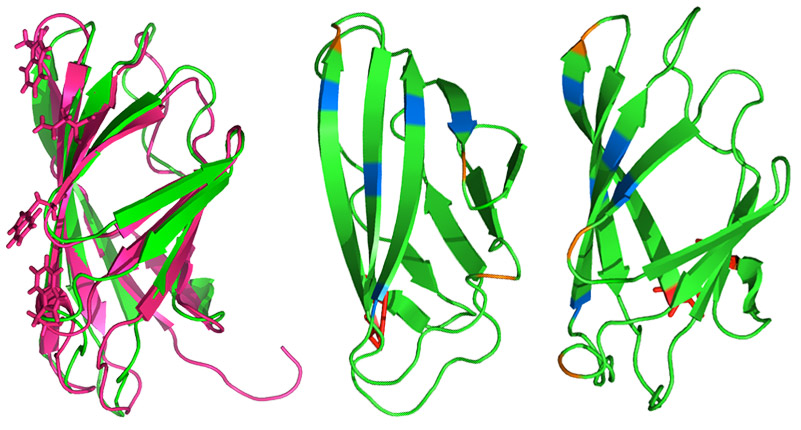
In a recent article published in Protein Expression and Purification, Great Lakes Bioenergy Research Center (GLBRC) researchers Sungsoo Lim, Shishir Chundawat and Brian Fox focus on one of the key steps involved in converting plant biomass into fuel molecules: how enzymes degrade cellulose, the chain of sugar molecules giving plant cell walls their rigidity.
Both fungal and bacterial enzymes (called cellulases) are known to degrade cellulosic biomass into simple sugars, such as glucose, that can then be converted into useful fuels and chemicals. These enzymes are typically multi-domain proteins wherein one of the domains – also called the “carbohydrate binding module” (CBM) – is the key player in actually binding the enzyme to the cellulose surface.
Less is known, however, about the nature of this binding, which in some cases is thought to be reversible and in others not.
“While some fungal CBMs bind reversibly to cellulose, most bacterial CBMs seem to bind irreversibly,” GLBRC researcher and co-author Shishir Chundawat says. “That’s a particularly perplexing finding given that the reversible nature of CBM binding to cellulose is likely critical to the efficient deconstruction of cellulose by enzymes.”
Using a CBM first isolated from a highly cellulolytic actinobacterium discovered in the GLBRC labs of Cameron Currie and Brian Fox, the researchers describe a simple strategy to produce fully functional bacterial CBMs, showing that – unlike previous studies of bacterial CBMs – these bacterial CBMs bind reversibly to cellulose.
“In the course of this study, we gained a deeper understanding of a critical interaction that allows enzymes to deconstruct cellulose,” Chundawat says. “And with every insight gained into how enzymes work, we move closer to increasing our efficiency in producing chemical or fuels derived from plant biomass.”
A detailed audio slide presentation of the paper’s results is also available via ScienceDirect.
This research was funded by The Great Lakes Bioenergy Research Center (GLBRC), one of three Department of Energy Bioenergy Research Centers created to make transformational breakthroughs that will form the foundation of new cellulosic biofuels technology. For more information on the GLBRC, visit www.glbrc.org.